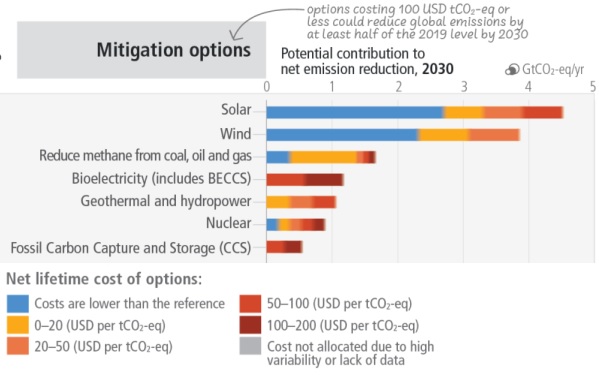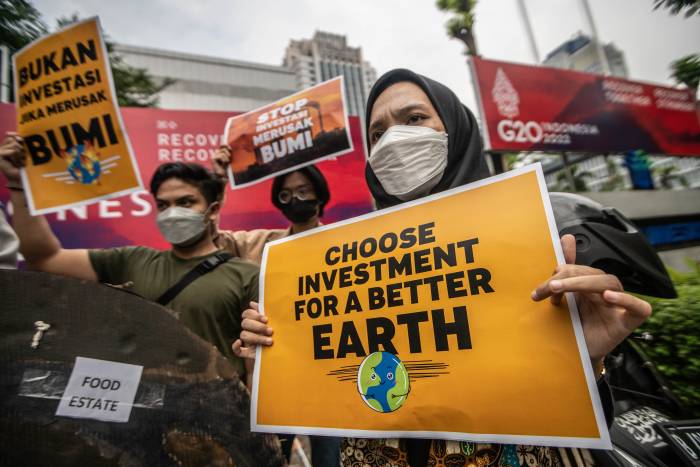The IPCC reports may feel like a fever dream for anyone following climate news this last decade. Another warning of a closing window of opportunity, another chance for proclaimers of doom to shout “we’re done for!” from their social media rooftops. But when you look at the actual report the message can be very different. Science is very clear: we have the solutions we need. We just have to apply them!
Solutions are available
We are in luck: we don’t need to wait for groundbreaking technological advances! We don’t need to wait for miracle solutions, because we already have the solutions. The IPCC even goes on to list them and, yes, solar and wind energy top the list. In addition to these, the world’s scientists point to other viable, scalable and affordable solutions that can be implemented at the community level, such as the electrification of urban systems and increasing energy efficiency, among others.
We don’t need technological miracles to solve the climate crisis. What we need is to reduce emissions, and to do that we need to stop burning fossil fuels. In sectors for which replacements are readily available, such as energy production (which has the biggest share of the emissions), this must be done without delay.
The science is clear: solar and wind are available, cheap and scalable.
The next best mitigation measure is to reduce methane from oil, gas and coal. Experimental initiatives such as Carbon Capture and Sequestration (CCS), bioelectricity or geothermal lag behind, while dirty low-carbon measures such as nuclear energy just can’t compete with solar and wind power. The IPCC does mention them as possible additional mitigation measures. But that is what they could be: an additional small push to the real solution, which is to radically change our energy systems by investing in renewable sources.

Mitigation solutions, ranked by potential contribution. Top to bottom: Solar; Wind; Reduce methane from coal, oil and gas; Bioelectricity (includes BECCS); Geothermal and hydropower; Nuclear; Fossil Carbon Capture and Storage (CCS). The colour codes represent the net lifetime costs of each option (blue being the cheapest and dark red the most expensive) // Source: IPCC Sixth Assessment Report. Synthesis Report. Summary for Policymakers. (adaptation)
Solutions are urgent and worth it
The 1.5ºC goal is alive, and achieving it requires immediate and deep reduction of global greenhouse gas emissions. Science says we can keep heating below 1.5 ºC, and if we make it, we will save uncountable lives and livelihoods, most of them in the Global South. Is that not worth the effort?
Some changes, the IPCC says, are unavoidable, but can be limited if we act fast and boldly to reduce global greenhouse gas emissions.
“Deep, rapid and sustained mitigation and accelerated implementation of adaptation actions in this decade would reduce projected losses and damages for humans and ecosystems […] and deliver many co-benefits, especially for air quality and health […]. Delayed mitigation and adaptation action would lock in high-emissions infrastructure, raise risks of stranded assets and cost-escalation, reduce feasibility, and increase losses and damages […].”
Solutions are in everyone’s interest
Except for those who line their pockets with the fossil fuel industry and their allies, solutions will improve living conditions for communities everywhere. They will ensure a more just and equitable world, abundant and clean energy access for all, and a healthier environment.
According to the IPCC, “many mitigation actions would have benefits for health through lower air pollution, active mobility (e.g., walking, cycling), and shifts to sustainable healthy diets. […] Adaptation can generate multiple additional benefits such as improving agricultural productivity, innovation, health and wellbeing, food security, livelihood, and biodiversity conservation”.

Climate Rangers, 350.org and partners protest in front of the Indonesian Ministry of Investment in April 2022, urging the government to stop investments in fossil fuel projects. Photo credit: Jurnasyanto Soekarno
Current commitments are not enough
We have the solutions we need. If we are not implementing them at the scale we need, it’s not because we can’t: it’s because we decide not to. The IPCC report highlights that the lack of implementation responds, mostly, to limited finance, technology development and transfer, and capacity. This is particularly true for impoverished countries (those less historically responsible for global heating).
Solutions depend on governments, intergovernmental organizations, civil society and the private sector. We all have our part to play, but to start, the IPCC makes something clear: the governments of the world have to do better. Their current commitments (known in climate diplomacy as ‘Nationally Determined Contributions’, or NDCs) are just not aligned with a livable, fair and equitable future for all. We are moving in the right direction, just not quickly enough.
It’s our role to push decision-makers into ditching fossil fuels and implementing renewables as soon as possible. And that’s what we, at 350.org, are doing. Join us!
More on Renewable Solutions for a Just Transition: